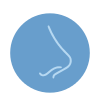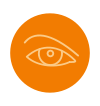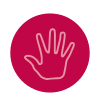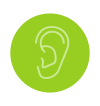Sensory design
Sensory design aims to establish an overall diagnosis of the sensory perceptions of a product, and define appropriate means to design or redesign it on that basis. It involves an observation of the diverse and varying situations in which a given product or object is used in order to measure the users' overall opinion of the product, its positive and negative aspects in terms of tactility, appearance, sound and so on.
Sensory assessment aims to quantify and describe, in a systematic manner, all human perceptions when confronted with a product or object. Contrary to traditional laboratory analysis, a sensory analysis of a product is either carried out by a panel of trained testers , or by specialized test equipment designed to mimic the perception of humans.
The result allows researchers to establish a list of specifications and to set out a precise and quantified requirement. These are applied to materials and objects using various criteria:
- Touch, textures, compliance, friction.
- Vision color, luminosity, shape, pattern.
- Sounds and movements made when a product is handled;
- Smell;
- Taste;
- Temperature and perceived thermal properties
Use in Transportation
In the transportation sphere, these two branches of sensory analysis translate into sometimes minor enhancements to the design for a vehicle interior, information system, or station environment to smooth some of the rougher edges of the travel experience.[1] For example, specialized air purifying equipment can be used to design a more pleasant odor.[2]
Use in Food and Beverage
Sensory design plays a critical role the modern food and beverage industry.[3] The food and beverage industry attempts to maintain specific sensory experiences. In addition to smell and flavor, the color of food (e.g. ripe fruits),[4] and texture of food (e.g. potato chips) are critical. Even the environment is important as "Color affects the appetite, in essence, the taste of food".[2]
Sensory Design Technologies
While classically limited to the perception of trained sensory experts, advances in sensors and computation have allowed objective quantified measurements of sensory information to be acquired, quantified and communicated leading to improved design communication, translation from prototype to production, and quality assurance. Sensory areas that have been objectively quantified include vision, touch, and smell.
Vision
In vision both light and color are considered in sensory design. Early light meters (called extinction meters) relied on the human eye to gauge and quantify the amount of light. Subsequently analog and digital light meters have been popularized for photography. Work by Lawrence Herbert in the 1960s lead to a systematic combination of lighting and color samples required to quantify colors by human eye. This became the basis for the Pantone Matching System. Combining this with specialized light meters allowed digital color meters to be invented and popularized.
Touch
Touch plays an important role in a variety of products and is increasingly considered in product design and marketing efforts and has led to a more scientific approach to tactile design and marketing.[5] Classical the field of tribology has developed various tests to evaluate interacting surfaces in relative motion with a focus on measuring friction, lubrication, and wear. However these measurements do not correlate with human perception.[6]
Alternative methods for evaluating how materials feel were first popularized from work initiated at Kyoto University.[7] The Kawabata evaluation system developed six measurements [8] of how fabrics feel. The SynTouch Standard[9] is a system developed using a biomimetic tactile sensor which quantifies fifteen dimensions of touch based on testing over 500 materials.[6]
Smell
Measuring odors has remained difficult. A variety of techniques have been attempted but “Most measures have had a subjective component that makes them anachronistic with modern methodology in experimental behavioral science, indeterminate regarding the extent of individual differences, unusable with infra humans and of unproved ability to discern small differences”.[10] New methods for robotic exploration of smell are being proposed.[11]
References
- ↑ Kingsley, Nick. "Railway Gazette: Sensolab drives interior experimentation".
- 1 2 Leone, Catherine. "Come to Your Senses". International Interior Design Association. Retrieved 9 March 2016.
- ↑ Moskowitz, Howard. Sensory and Consumer Research in Food Product Design and Development (2 ed.). Wiley-Blackwell. ISBN 978-0-8138-1366-0.
- ↑ Mendoza, Fernando. "Calibrated color measurements of agricultural foods using image analysis". Postharvest Biology and Technology. 41 (3): 285–295. doi:10.1016/j.postharvbio.2006.04.004.
- ↑ Spence, Charles (3 March 2015). "Multisensory design: Reaching out to touch the consumer". Psychology and Marketing. 28 (3): 267–308. doi:10.1002/mar.20392.
- 1 2 Fishel, Jeremy (18 June 2012). "Bayesian exploration for intelligent identification of textures". Frontiers in Neurorobotics. 6. doi:10.3389/fnbot.2012.00004.
- ↑ "Kawabata Evaluation System for Fabrics". Kawabata Laboratory.
- ↑ Lahey, Timothy (2002). "Modelling Hysteresis in the Bending of Fabrics" (PDF): 17–21.
- ↑ "Tactile Characterization". SynTouch. Retrieved 9 March 2016.
- ↑ Wise, Paul (2000). "Quantification of Odor Quality". Chemical Senses. 25 (4): 429–443. doi:10.1093/chemse/25.4.429.
- ↑ Loutfi, Amy (8 June 2006). "Smell, think and act: A cognitive robot discriminating odours". Autonomous Robots. 20 (3): 239–249. doi:10.1007/s10514-006-7098-8.
Bibliography
- Joy Monice Malnar and Frank Vodvarka, Sensory Design, (Minneapolis: University of Minnesota Press, 2004). ISBN 0-8166-3959-0
- (French) Louise Bonnamy, Jean-François Bassereau, Régine Charvet-Pello. Design sensoriel. Techniques de l'ingénieur, 2009
- (French) Jean-François Bassereau, Régine Charvet-Pello. Dictionnaire des mots du sensoriel. Paris, Tec & Doc - Editions Lavoisier, 2011, 544 p. ISBN 2-7430-1277-3



